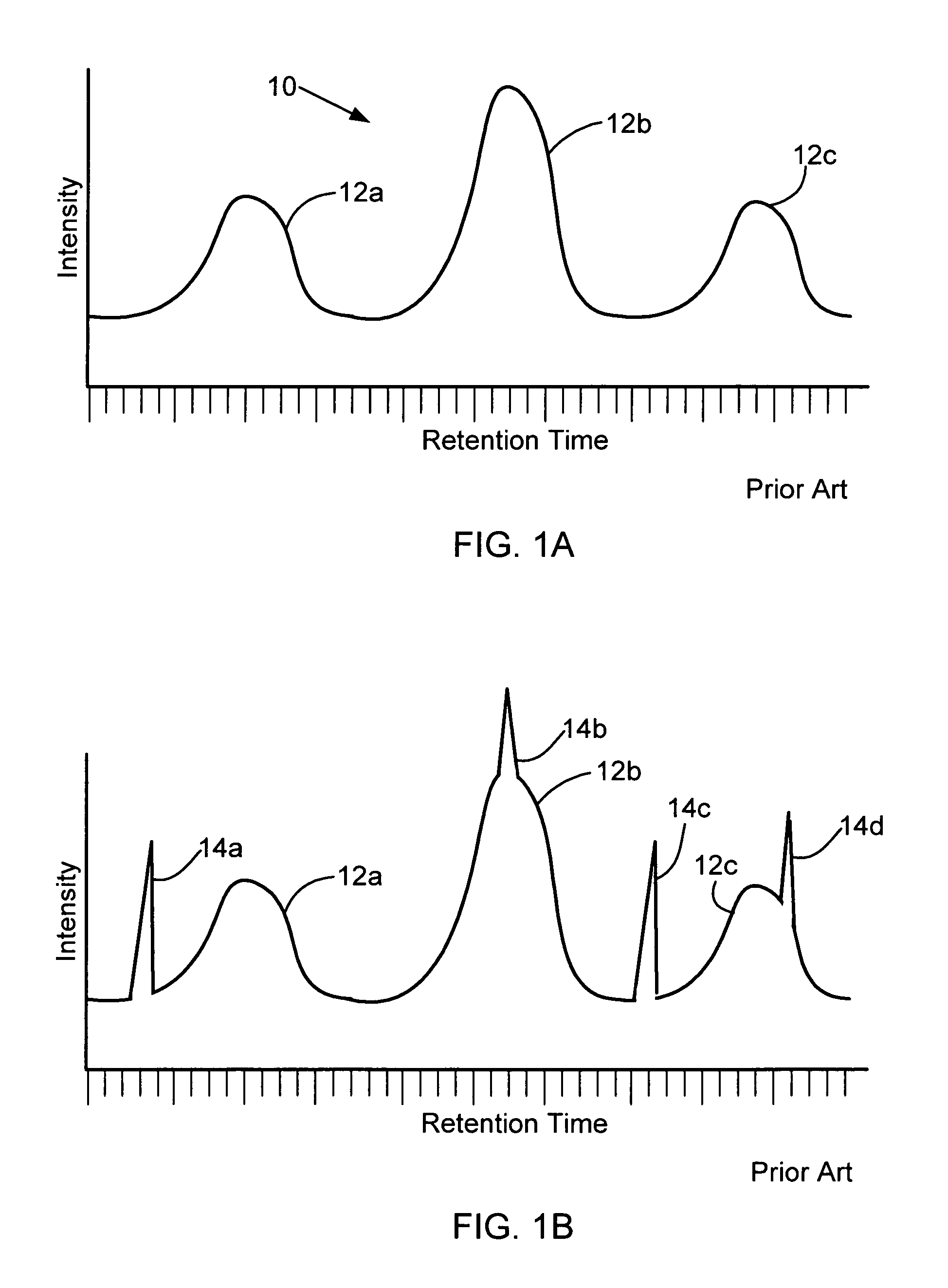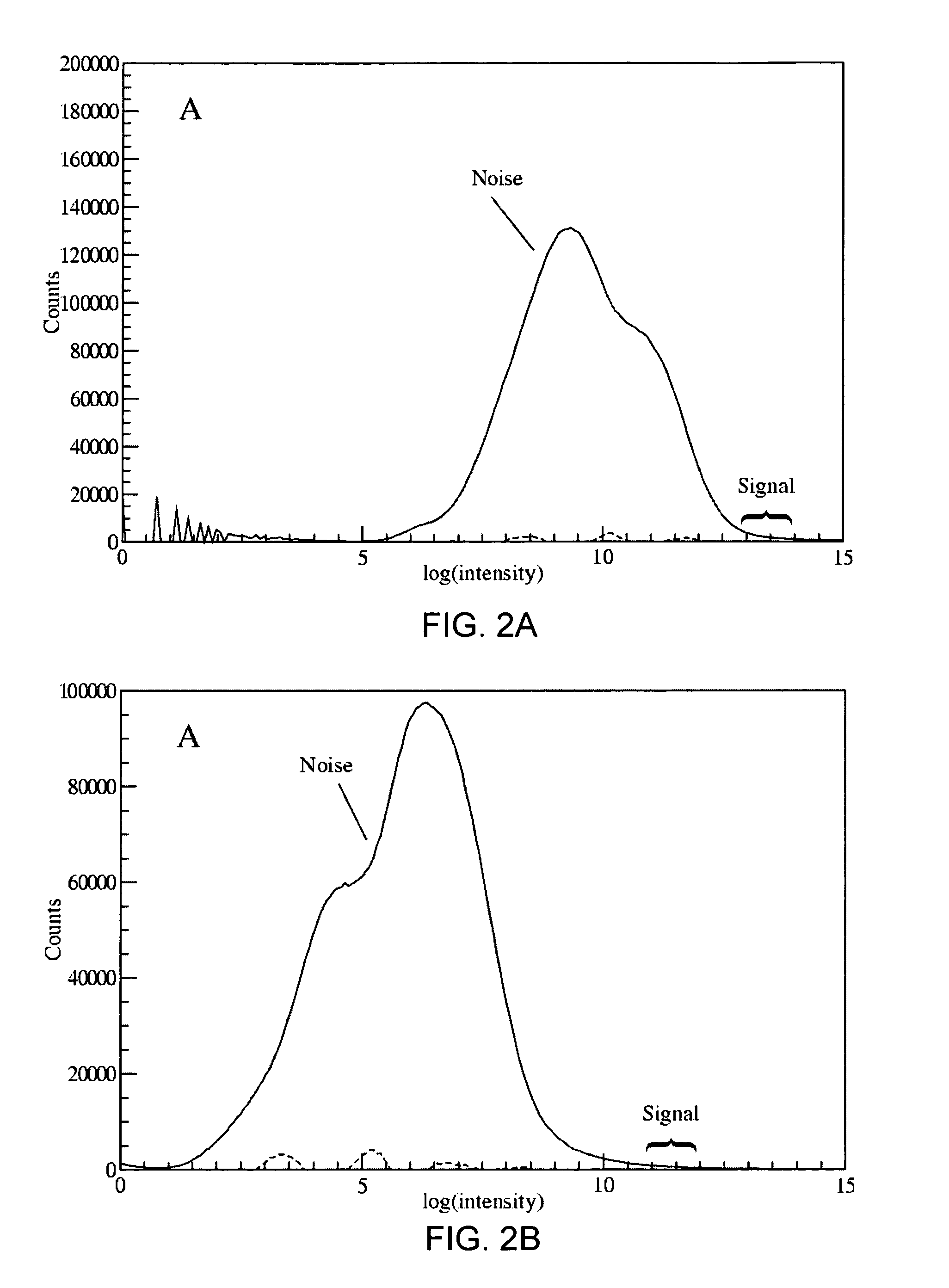Median filter for liquid chromatography-mass spectrometry data
a mass spectrometry and media filter technology, applied in the field of data analysis, can solve the problems of increasing the difficulty of the operator the procedure is clearly time-consuming, and the noise spike is difficult to distinguish the chromatographic peak, so as to achieve the effect of higher intensity
- Summary
- Abstract
- Description
- Claims
- Application Information
AI Technical Summary
Benefits of technology
Problems solved by technology
Method used
Image
Examples
Embodiment Construction
[0026]The present invention provides a method for filtering chromatographic and spectrometric data to reduce noise in individual mass chromatograms, thereby facilitating subsequent selection of peaks or high quality chromatograms for component detection. In liquid chromatography-mass spectrometry (LC-MS) or gas chromatography-mass spectrometry (GC-MS) data, the noise intensity is often larger than the intensity of the peaks corresponding to eluted species, making it very difficult to extract meaningful information from the data. The method of the invention is able to reduce substantially such large magnitude noise spikes.
[0027]LC-MS noise originates from a variety of sources corresponding to different components of the system. Each physical mechanism of the system contributes its own noise distribution to the final measured ion current. For example, chemical noise results from column bleed, i.e., long-time elution of strongly-adsorbed species at particular mass-to-charge ratios, low...
PUM
| Property | Measurement | Unit |
|---|---|---|
| mass | aaaaa | aaaaa |
| mass spectra | aaaaa | aaaaa |
| chromatography | aaaaa | aaaaa |
Abstract
Description
Claims
Application Information
 Login to View More
Login to View More - R&D
- Intellectual Property
- Life Sciences
- Materials
- Tech Scout
- Unparalleled Data Quality
- Higher Quality Content
- 60% Fewer Hallucinations
Browse by: Latest US Patents, China's latest patents, Technical Efficacy Thesaurus, Application Domain, Technology Topic, Popular Technical Reports.
© 2025 PatSnap. All rights reserved.Legal|Privacy policy|Modern Slavery Act Transparency Statement|Sitemap|About US| Contact US: help@patsnap.com



